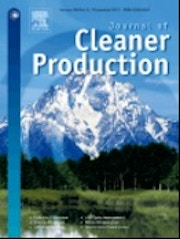
In a previous work, the Product Structure-based Integrated Life cycle Analysis (PSILA) technique was developed to conduct cost modelling and analysis of closed-loop production systems.
In this paper, we expand the utility of this technique into carbon footprint modelling and analysis of closed-loop production systems – enabling companies to make informed decisions on whether to adopt closed-loop production based not only on economic but also environmental performance.
A description of the PSILA technique applied for carbon footprint modelling and analysis is explained, followed by a case study of closed-loop production of a flat-panel display (FPD) monitor to validate the technique. We verified the CFP result simulated by the model built through the PSILA technique, or PSILA-CFP model in short, against the result generated by a model built through the conventional Life Cycle Assessment (LCA) method.
A benchmarking analysis was then conducted to compare the closed-loop production system against the linear production system. Through this analysis, we demonstrated how the CFP result can be broken down based on the product structure, thus enabling us to granularise the result and trace the impact of implementing a closed-loop production system to the individual modules, components and materials that are recovered, reutilised or treated in the system.
The results were able to show that the implementation of the closed-loop production system for the FPD monitor can potentially result in an overall CFP reduction of 39.91 million kg CO2e, of which 90.03% is contributed by the closed-loop recycling of ABS. The other significant contributors of CFP reduction are from the closed-loop material recycling of the aluminium, which accounts for 8.13 million kg CO2e or 20.37% of the total CFP reduction.
A sensitivity analysis was also carried out to investigate the effects of data uncertainties, which may invalidate assumptions made in the case study. In summary, we have successfully adapted the PSILA technique so as to provide decision support in the form of analytical insights on how a closed-loop production system will perform in terms of carbon footprint, why it performs this way and what to look out for if the decision is made to implement such a system.
Publish your content with EB Publishing
It's about who you reach. Get your news, events, jobs and thought leadership seen by those who matter to you.









